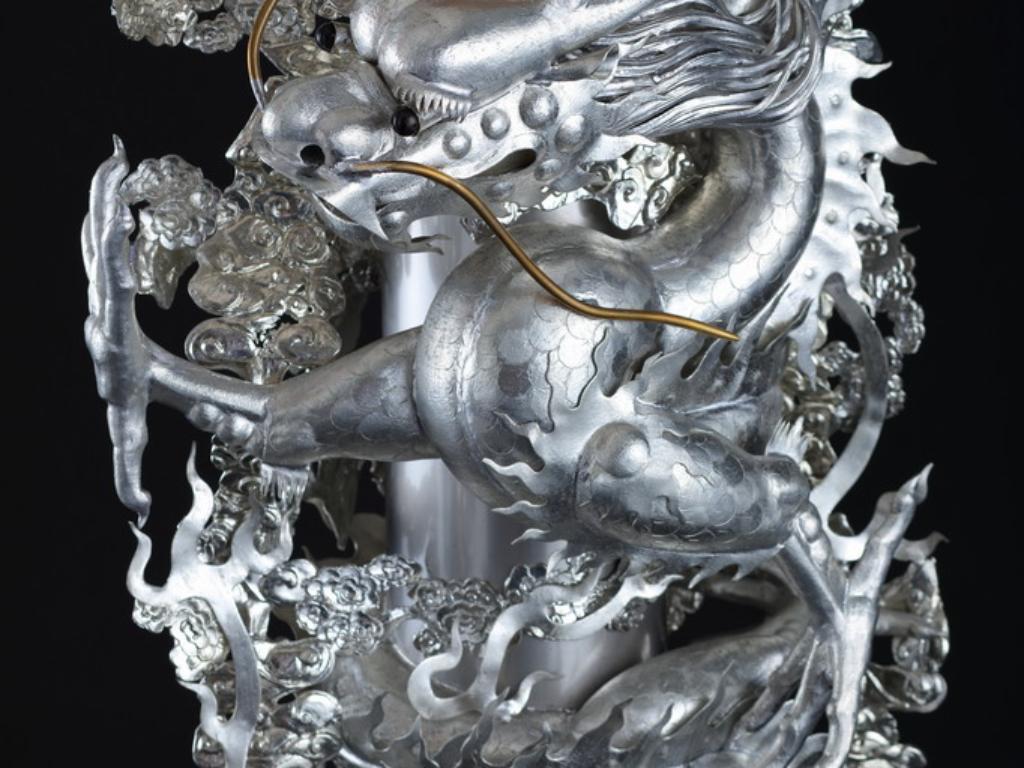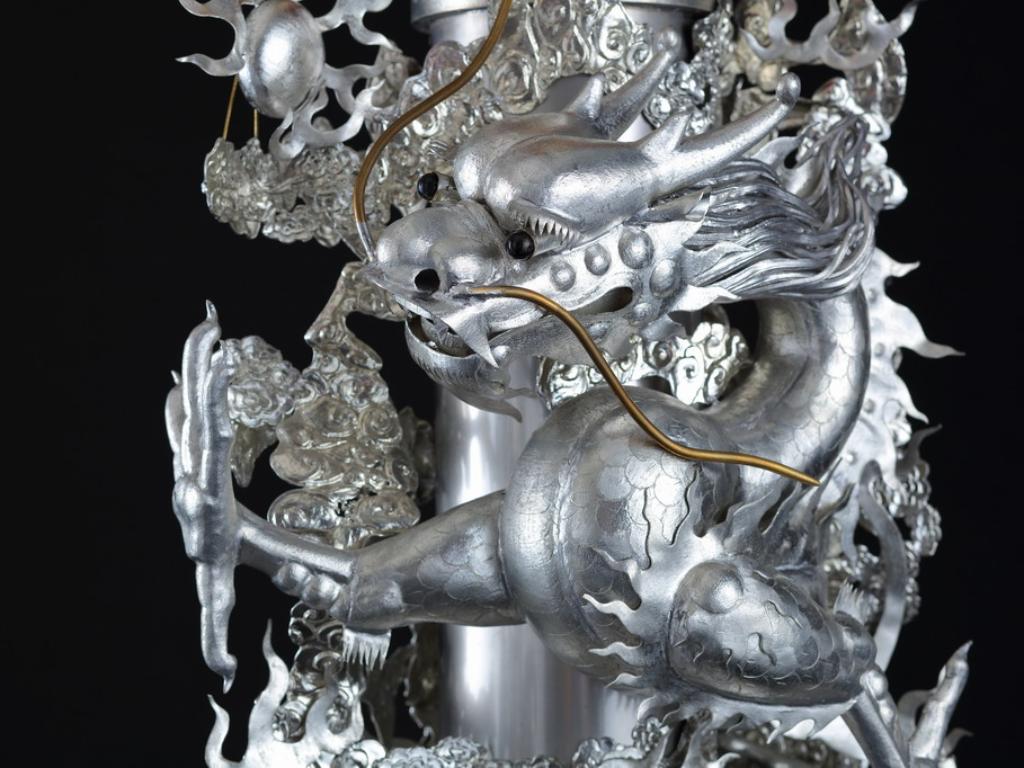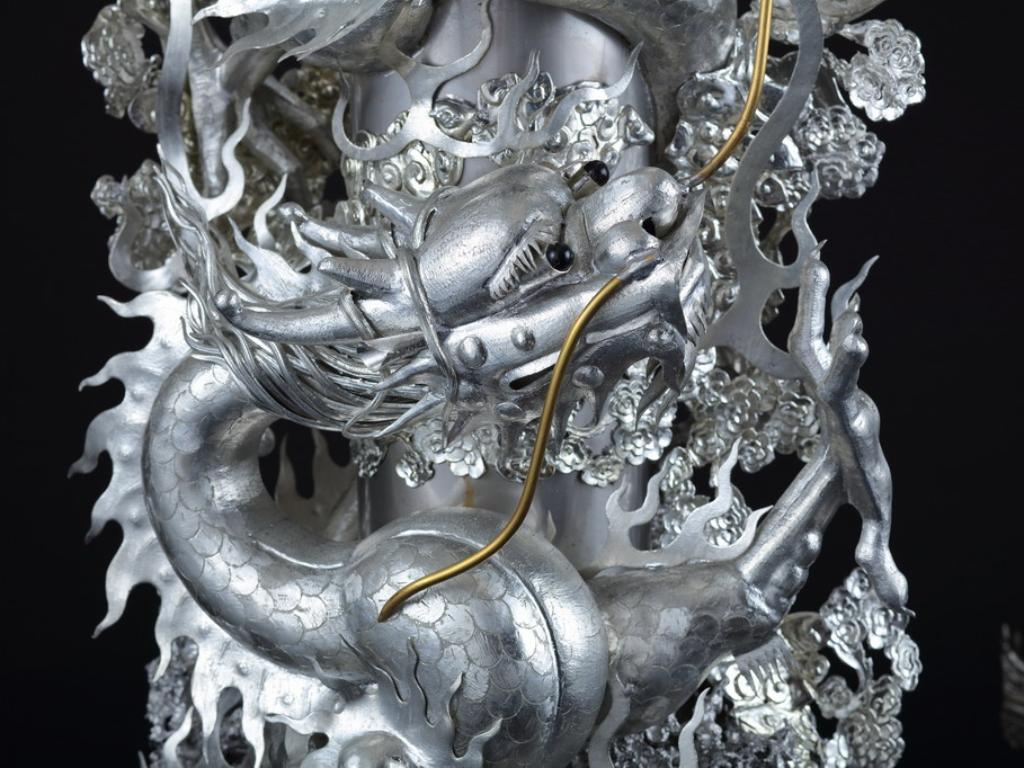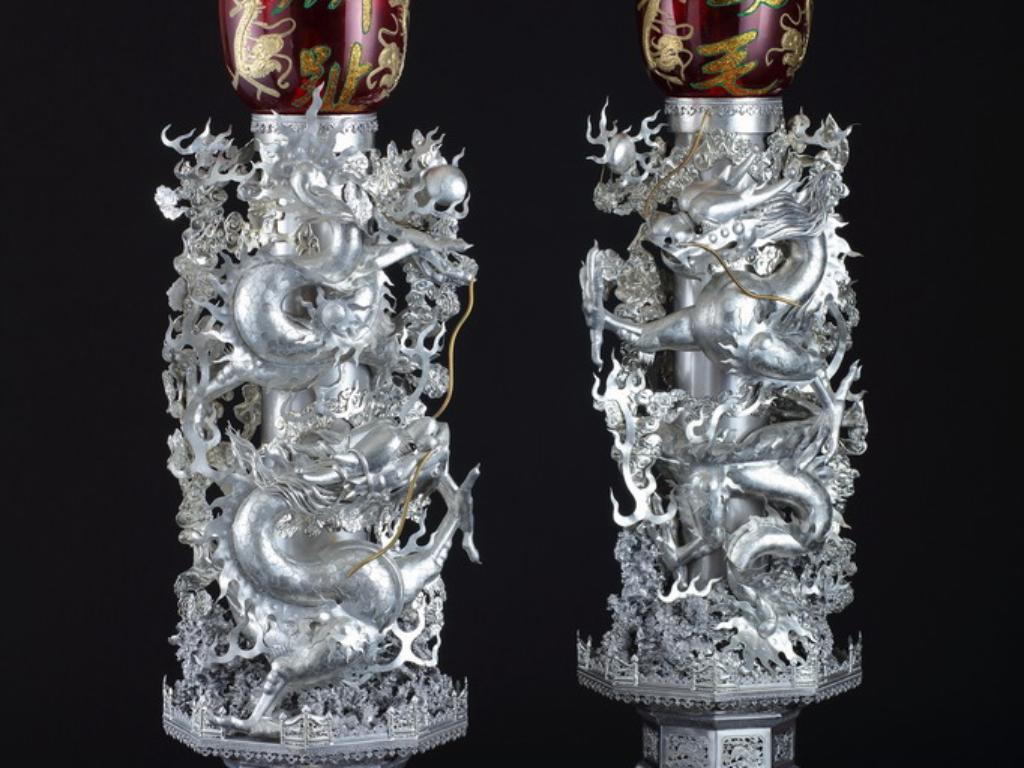
Collection
Dragon Pillar Lamps
Dragon Pillar Lamps is the work from master of tin art, Chen Wan-Neng, which is based on the style of traditional orange-shaped lamps with innovation. In the traditional Taiwanese wedding custom, the groom must give the bride a pair of dragon candles and a pair of orange-shaped lamps. Orange-shaped lamps are the sacrificial vessel used for the private religion in Taiwan and they are placed on the altar in the temple as the symbol of brightness. When they are placed in ancestral hall or the worship hall at home, they are also called tin lamps for male offspring offering due to “tin” has similar sound as “offering” in Taiwanese and “lamp” has the same sound as “offspring” for boys in Taiwanese. Tin lamps are also called red orange (mandarin) lamps and the meaning is to wish the new husband and wife to have a child soon as well as to pray for their offspring will be able to have a lot of children and a lot of good luck as the many seeds in the orange. Therefore, a pair of lamps shade in red color and the shape of orange are added on the base of the lamps. In addition, some words representing good luck, like phoenix feather and qilin hoofs, are put on to wish the offspring standing out among people. To improve the defects of space occupation, Chen Wan-Neng combines the dragon candle with the orange-shaped lamps as “Dragon candle lamps”.
The dragon pillar lamp is two pieces of one set. The main body contains one upper piece and one lower piece to present 3D dragon twining around and surrounded by clouds. The body of dragon and the clouds are hand-made tin products with red orange-shaped lamps on top and “phoenix feather” and “qilin hoofs” are written in golden powder. On the bottom, it is traditional octagon base and it is decorated with molded hallow tin sheet welding combination. Traditionally, dragon presents nobility and auspiciousness as well as people's expectation on being successful. Moreover, dragon pillar contains multiple layers of meanings in the temple architecture. The design of two dragons in this piece of work for looking at each other from looking down and looking up symbolizes “harmony between Yin and Yang”. Its shape design might be affected by the dragon pillars in Lukang Lungshan Temple and it demonstrates the craftsman's imagination and innovation.




